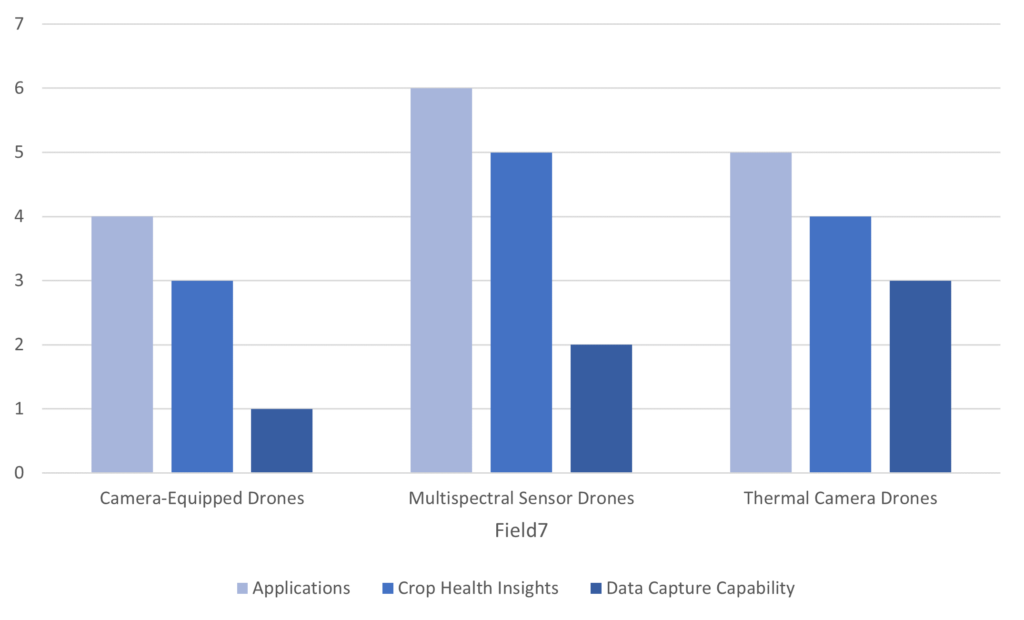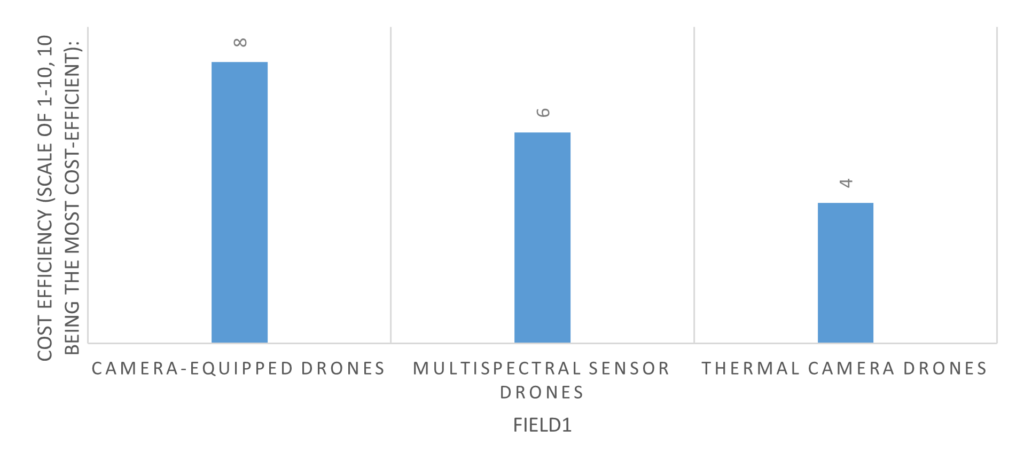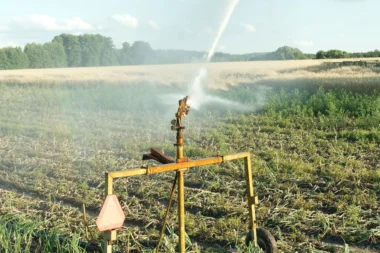INTRODUCTION:
Precision farming has become increasingly crucial in modern agriculture, enabling farmers to optimize resource management and maximize crop yields. One emerging technology that is revolutionizing crop damage assessment in precision farming is drones. Drones offer a versatile and efficient solution for gathering real-time data on crop health, enabling farmers to detect and mitigate damage promptly.
USES OF THE DRONES:
Drones have many applications in precision farming, particularly in crop damage assessment. They can monitor various types of damage, including pest infestations, disease outbreaks, nutrient deficiencies, and physical damage caused by weather events or animals. By capturing high-resolution aerial imagery, drones enable farmers to quickly assess the extent and severity of damage across large agricultural fields. This data is valuable input for decision-making regarding pest control measures, irrigation adjustments, and targeted crop treatments.
TYPES OF DRONES USED:
In crop damage assessment using drones, several techniques and appliances are employed to gather accurate and reliable data. First, drones equipped with high-resolution cameras or multispectral sensors capture aerial imagery of the crops. These sensors can detect specific wavelengths of light to identify variations in crop health. Additionally, thermal cameras can be used to determine temperature differences, aiding in detecting diseases or water stress. To improve accuracy and efficiency, drones can be equipped with GPS and autopilot systems, enabling automated flight paths and precise positioning during data collection.
CAMERA-EQUIPPED DRONES:
Camera-equipped drones are a popular choice for crop damage assessment in precision farming. These drones are equipped with high-resolution cameras capable of capturing detailed aerial imagery of crops. The cameras on these drones provide visual insights into crop health and damage. They capture images in the visible spectrum, allowing farmers to monitor vegetation indices, identify anomalies, and assess the overall health of crops.
Camera-equipped drones offer several advantages. They provide a cost-effective solution for gathering real-time data over large agricultural areas. The high-resolution imagery obtained from these drones helps identify crop stress, nutrient deficiencies, pest infestations, and physical damage caused by weather events or animals. Farmers can visualize the extent and severity of damage through the captured images, enabling them to make informed decisions regarding pest control measures, irrigation adjustments, and targeted crop treatments.
One limitation of camera-equipped drones is that they rely solely on visual imagery, which may not detect subtle variations in crop health. They cannot capture data beyond the visible spectrum, such as specific wavelengths related to chlorophyll levels or water stress. However, camera-equipped drones are valuable for crop damage assessment in precision farming when used with other data sources or when precise visual imagery is sufficient.
MULTISPECTRAL SENSOR DRONES:
Multispectral sensor drones take crop monitoring to a more advanced level by capturing imagery in multiple electromagnetic spectrum bands. These drones have specialized sensors that can detect specific wavelengths of light beyond what the human eye can perceive. The captured imagery provides detailed information about crop health, such as chlorophyll levels, water stress, nutrient deficiencies, and disease outbreaks.
The advantage of multispectral sensor drones lies in their ability to provide comprehensive data on crop health. By analyzing the spectral bands captured by the sensors, farmers can obtain valuable insights into the physiological condition of crops. For example, they can assess the amount of chlorophyll in plants, indicating their photosynthetic activity. This information helps identify areas of low chlorophyll concentration, indicating potential nutrient deficiencies or stress conditions.
Multispectral sensor drones offer a more accurate and precise crop health assessment than camera-equipped drones. However, they can be more expensive due to the specialized sensors required. Additionally, multispectral data analysis may require more advanced processing techniques and remote sensing and data interpretation expertise.

REAL-TIME APPLICATION USING THE DRONES:
Thermal camera drones capture infrared imagery, allowing farmers to identify crop temperature variations. These drones are equipped with thermal cameras that detect and measure heat radiation emitted by objects. Farmers can see areas of interest by analyzing the temperature differences, such as diseases, water stress, or damage caused by external factors like wildlife.
Drones equipped with thermal cameras have the advantage of being able to spot thermal abnormalities that conventional cameras or the human eye could miss. They can identify areas of crop stress or disease outbreaks based on temperature variations. For example, if some regions of a crop field show higher temperatures, it may indicate water stress or the presence of pests or diseases. This information enables farmers to take targeted actions, such as adjusting irrigation or applying appropriate treatments.
However, thermal camera drones have limitations in capturing other aspects of crop health beyond temperature variations. They may provide a different level of detail than visual or multispectral imagery. Additionally, thermal cameras can be more expensive compared to standard cameras. Nonetheless, they are valuable tools for detecting specific issues related to temperature variations and can complement other data sources in crop damage assessment.
COMPARISON BETWEEN THE DRONES:
Each device has its advantages and limitations. Camera-equipped drones offer detailed visual imagery but may lack the ability to detect subtle variations in crop health. Multispectral sensor drones provide more comprehensive data on crop health by capturing imagery in multiple spectral bands, but they can be more expensive. Thermal camera drones excel at identifying temperature differences, making them practical for detecting stress or disease, but they may have limitations in capturing other aspects of crop health. The choice of device depends on the specific needs and budget of the farmer.
CASE STUDIES AND OUTCOMES:
Several studies have demonstrated the successful implementation of drones for crop damage assessment. For instance, researchers have utilized multispectral sensor drones to monitor disease outbreaks in vineyards, resulting in early detection, targeted treatment, and significant yield improvements. In another study, thermal camera drones were employed to identify water stress in crops, allowing farmers to optimize irrigation strategies and conserve water resources. These implementations have shown promising results in enhancing crop management practices and minimizing yield losses.
PROS AND CONS:
The use of drones for crop damage assessment offers numerous advantages. Drones provide a cost-effective and efficient means of gathering real-time data over large agricultural areas, allowing for timely interventions and precise resource allocation. They enable farmers to monitor crops from a holistic aerial perspective, identifying damage or stress that may not be evident from ground-level observations. However, drones also have limitations, including flight time restrictions, weather dependencies, and the need for skilled operators and data analysis expertise.
COST EFFICIENCY:
Cost efficiency is significant in selecting drone technology for crop damage assessment.
- Camera-Equipped Drones: Camera-equipped drones are generally the most cost-effective option. These drones utilize standard high-resolution cameras that are widely available in the market. They are relatively affordable, making them accessible to farmers with budget constraints. Additionally, camera-equipped drones do not require specialized sensors or complex data processing techniques, reducing the overall cost of implementation. Their versatility further enhances the cost efficiency of camera-equipped drones. They can be used for various applications beyond crop damage assessment, such as field mapping, monitoring growth patterns, or capturing visual data for documentation purposes. This versatility increases their value for money and makes them a cost-efficient choice for farmers seeking a reliable yet affordable solution for crop monitoring.
- Multispectral Sensor Drones: Compared to camera-equipped drones, multispectral sensor drones come at a higher price point. The specialized sensors used in these drones to capture imagery in multiple spectral bands are more expensive than standard cameras. The additional cost stems from the advanced technology and the ability to collect detailed data on crop health. While multispectral sensor drones have a higher upfront cost, they offer enhanced data acquisition and analysis capabilities. Their detailed spectral information allows for a deeper understanding of crop conditions, enabling farmers to make informed decisions and take targeted actions. Therefore, evaluating the cost-effectiveness of multispectral sensor drones is important, considering the unique requirements and possible returns on investment they can meet.
- Thermal Camera Drones: Thermal camera drones are the most expensive option due to the specialized thermal imaging technology they incorporate. Thermal cameras are more complex and costly than standard cameras or multispectral sensors. The ability to capture temperature variations adds a layer of functionality and cost to these drones. The cost efficiency of thermal camera drones depends on the specific requirements of the crop damage assessment. If temperature-related issues, such as water stress or disease detection, are critical factors in farming, then the investment in thermal camera drones can be justified. However, for general crop monitoring needs, where temperature variations may not be the primary concern, the higher cost of thermal camera drones may outweigh their cost efficiency.
It’s essential to consider the overall value and benefits each drone type brings to the crop damage assessment process. While camera-equipped drones are the most cost-effective option, multispectral sensor drones, and thermal cameras provide additional data insights that may justify their higher price tags in specific scenarios. Farmers should carefully evaluate their needs, budget constraints, and potential returns on investment to determine the most cost-efficient solution for their crop damage assessment requirements.

CONCLUSION:
Drones have revolutionized crop damage assessment in precision farming, enabling farmers to monitor and mitigate damage more effectively. Farmers may acquire real-time information on crop health, identify anomalies, and make wise judgments for prompt interventions through camera-equipped drones, multispectral sensor drones, and thermal camera drones. Despite certain limitations, the advantages of using drones outweigh the drawbacks, leading to improved crop management practices and increased yields. Drones are anticipated to play an ever-more-important role in precision farming as technology develops and becomes more widely available, helping to promote sustainable agriculture and food security.



